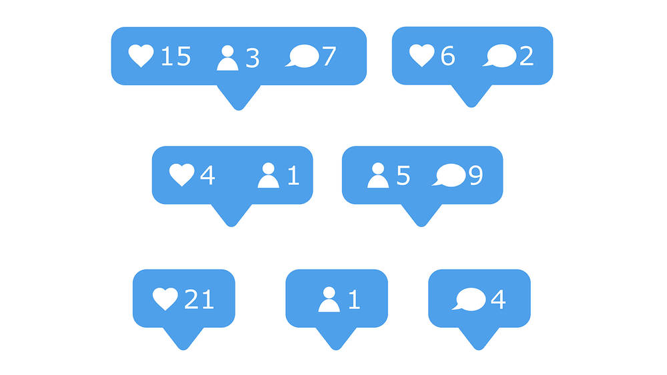Using electronic word of mouth to build on consumer generated content
Consumers are now voicing their opinions online and interacting digitally than ever before through electronic word of mouth (eWOM). Within the fashion sector, consumers now have the power to control purchasing and product development process which has enabled new levels of collaboration and empowerment. These opinions are often expressed via online communities such as discussion forums, social media and weblogs because of the digitalised social world. Within those communities, consumers seek information about products and reviews from other consumers as they trust the view of other consumers more trustworthy (Kumala, Mesiranta and Tuominem, 2013). This post will detail how fashion brands can adopt eWOM to boost consumer generated content and increase revenue by offering rewards in return and provide better insight for the company.
Westbrook (1987, p.261) defined word of mouth as ‘the informal communication directed at other consumers about the ownership, usage or characteristics of particular goods and service or sellers. eWOM on the other hand incorporates “any positive or negative statements made by potential, actual, or former customers about a product or company, which is made available to a multitude of people and institutions via the Internet” (Henning–Thurau et al., 2004, p. 39). The proliferation of the internet and web 2.0 technologies has enabled a series of web of continuous development in the field of social media and e-commerce operations which has resulted in radical change in the way consumers and fashion retailers relate to each either (Vecchi, 2017).
Consumer generated content is concerned with internet content that is generated and published by everyday consumers, not media or communications professionals (Henning-Thurau et al, 2004). Fashion brands can adopt various digital strategies to boost eWOM for example:
Blogs and influencers
Blogs/Vlogs represent one of the fastest growing channel for spreading WOM and social influence (Mitchell et al, 2012). Blogs enable communication that glide through social media sites and influence consumer decision making process and persuade consumers to purchase certain fashion products.
Popular YouTube Vlogger Lauren Curtis has a big following online and regularly makes videos of her latest clothing purchases. (Festinger, 1954) Social Comparison theory suggests individuals cannot objectively evaluate themselves, so they compare themselves with others. fashion consumers compare themselves with influencers who persuade them to buy certain fashion products. Fashion brands can adopt this theory by collaborating with popular influencers to review their products on the company’s official social media pages which could be shared online amongst users to boost consumer generated content.
Social Media
Social media has had a rapid rise in the last decade. Social media is simple and easy to use, share pictures and videos with a hashtag that enables others alike to find your posts. Instagram for example is a great marketing tool that provides a pragmatic function for advertising and generating eWOM. Per (Goldsmith and Horowitz, 2006), consumers who search for eWOM are interested in gaining information before making a purchase to reduce risk and facilitate the purchase decision. When consumers search for eWom on Instagram, they are looking for images of the products that have been uploaded by consumers with their own perspective or review of the product. Fashion brands can adopt this method by encouraging established consumers take a picture of their latest purchase and share it on Instagram with a specific hashtag as part of a competition. In return, consumers will receive vouchers, gifts and discount of their next purchase.
An example of use EWOM on Instagram is the #MyCalvins campaign. The campaign allows consumers to submit photos wearing Calvin Klein products with the hashtag #MyCalvins on Instagram, Twitter, Facebook, and their website. The campaign has seen celebrity endorsers such as Justin Bieber, Kendrick Lamar and Kendall Jenner.
Example of #MyCalvins campaign on Instagram.
Limitation of eWOM
Regarding eWOM, the receiver is often unaware of the sender of the information. As a result, eWOM is less trusted compared to traditional WOM. On social media, the individual’s consumers interact with aren’t the same as friends and can often mislead or give a bias review of a product.
Link to further readings
References
Cheung and Thandi https://www.researchgate.net/publication/257015995_The_impact_of_electronic_word-of-mouth_communication_A_literature_analysis_and_integrative_model
Festinger, L. (1954), “A theory of social comparison processes”, Human Relations, Vol. 7 No. 2, pp. 117-140.
Kumala, Mesiranta and Tuominem, 2013). http://www.emeraldinsight.com/doi/full/10.1108/13612021311305119
Mitchell, R., Hutchinson, K. and Bishop, S. (2012), “Interpretation of the retail brand: an SME perspective”, International Journal of Retail & Distribution Management, Vol. 40 No. 2, pp. 157-175.
Vecchi, 2017 https://books.google.co.uk/books?id=Co9ADgAAQBAJ&dq=use+of+eWOM+in+fashion+ecommerce&source=gbs_navlinks_s
Westbrook, Robert. A. (1987), “Product/Consumption-based Affective Responses and Postpurchase Process”, Journal of Marketing Research, Vol. 24 (August), pp. 258-270.
http://www.brandba.se/blog/2016/12/14/how-does-ewom-within-social-media-affect-you-as-a-consumer
Henning–Thurau et al.,
http://www.sciencedirect.com/science/article/pii/S1094996804700961
http://www.brandba.se/blog/2016/12/14/how-does-ewom-within-social-media-affect-you-as-a-consumer
https://www.meltwater.com/blog/6-brands-winning-at-user-generated-content/





